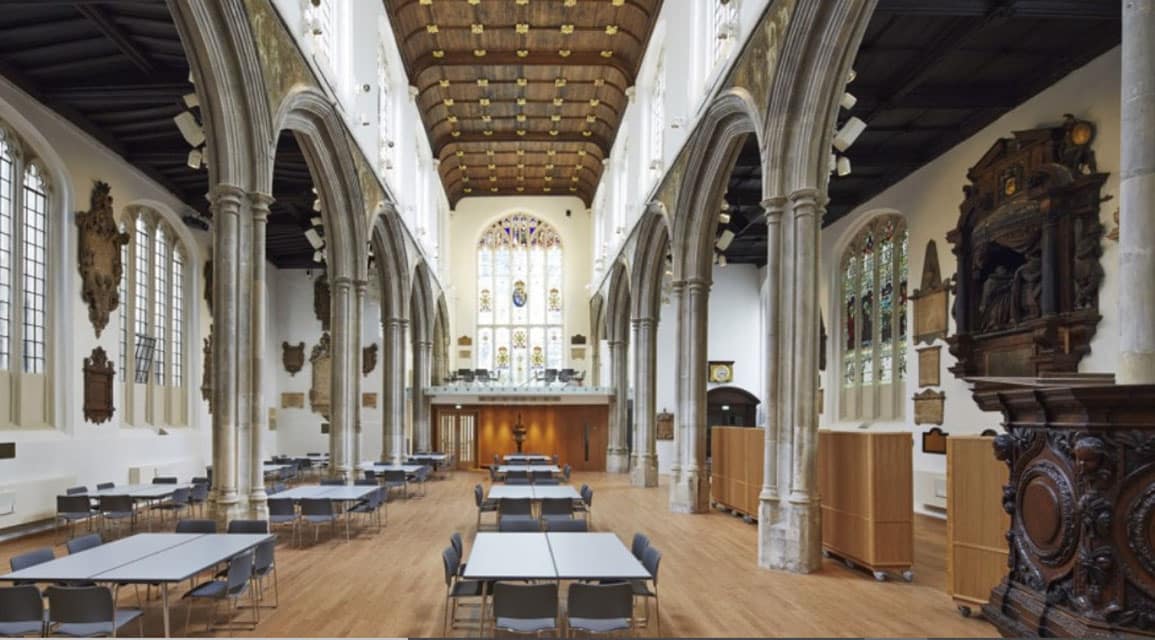Making almost any physical change to your church building, contents or churchyard requires permission.
Permission is granted by the Consistory Court of the Diocese, and is called a Faculty. This gives you authorisation to carry out the work and is part of the Church of England’s own system of building control. This system ensures that church buildings are properly cared for and that whatever is done to them is properly considered beforehand and carried out in the most appropriate way. It also takes the place of Listed Building Consent normally required for secular listed buildings.
The steps to obtaining a faculty:
Some minor works to churches can be carried out without needing a Faculty.
These are outlined on List A & B downloadable at the bottom of this page.
Very minor works to churches can usually be carried out without any consents, subject to some standard conditions. These works are on List A. When undertaking works on this list it is good practice to notify your Archdeacon and to consult with your QI architect/surveyor.
Other minor works can usually be carried out without a faculty but with the written consent of the Archdeacon, subject to some standard conditions. These works are on List B and while they can be approved by the Archdeacon, he/she may need to consult with the Diocesan Advisory Committee (DAC) before giving consent, for this reason applications should be made to the Parish Property Support Team through the online portal and not directly to the Archdeacon. Some guidance on using the application portal is available.
When submitting an application for the Archdeacon’s consent you should include a PCC resolution and also detailed plans for the proposals. Most applications will not need a Statement of Significance but a short Statement of Need (see below) may help the Archdeacon understand the background to your application.
If in doubt, check with your Archdeacon or the Parish Property Support Team.
Contact:
Church Buildings Advisers – DAC
Patrick Booth – patrick.booth@london.anglican.org
Isabelle Ryan – isabelle.ryan@london.anglican.org
Resource
If the works that you propose do not appear on List A or B you will need to obtain a Faculty. Please continue to step 2 below.
A template for a Statement of Need is downloadable at the bottom of this section.
The Statement of Need explains the background to the proposal and its justifications. How did it come about? Why do you want to do it? Did you look at any other ways of achieving what you wish to do? If so, why did you decide against them? Does your proposal address a shortcoming in the building or its services? If so, what is that and what problems does it cause? How will what you wish to do change the life of your parish? How will it help to further mission?
It’s important not to make a Statement of Need speculative. Say you wish to remove the pews from your church: writing, “If we removed the pews then we could hold such-and-such an event” is a speculative justification – you want to make an irreversible change to do something that you’ve not tried before. But if you say, “We’ve held such-and-such an event in the church and it was a big success, but the pews got in the way and prevent us from expanding it” then such a justification will carry a lot more weight.
If the proposals involve a Grade II* or a Grade I listed building, it would be advisable to submit a full Conservation Plan instead of a Statement of Significance. This should include an Impact Assessment, noting how building features will be affected as this helps build a rational for change for consultation with the Church Buildings Council or Historic England.
Guidance on statements can be found here: http://www.churchcare.co.uk/churches/guidance-advice/statements-of-significance-need
Resource
A template for a Statement of Significance is downloadable at the bottom of this section.
The Statement of Significance should be in two sections. The first sets out the history of the building. When was it built? Who designed it? How did the first building evolve over time? Was it replaced or rebuilt or is it a well preserved example of its type? What are its architecturally and historically most important features? These are the sorts of questions that the first part needs to answer. Include plans and photographs of the building, both up-to-date and historical ones, as all this material will help the people handling your application.
The second part should explain what the impact of the proposals will be on the building. Will any fabric need to be demolished or altered? Will fittings need to be removed or relocated? How will the appearance of the building change as a result? These are the sorts of questions that the first part needs to answer. You may already have a church guide with this information. This can be an excellent basis for a Statement of Significance, although it’s important to tailor the information to each particular application. Statements of Significance are a mandatory requirement for applications for works to listed churches. They are not compulsory for unlisted buildings, but can sometimes be helpful – the Parish Property Support Team can advise you on whether one might be needed.
Guidance on both statements can be found here: http://www.churchcare.co.uk/churches/guidance-advice/statements-of-significance-need
Resource
The team will check the application to make sure you have the correct information
Contact:
Church Buildings Advisers – DAC
Patrick Booth – patrick.booth@london.anglican.org
Isabelle Ryan – isabelle.ryan@london.anglican.org
Since it is exempt from listed building control, the Church of England has a statutory obligation to consult Historic England, the National Amenity Societies and the Conservation Officers of the relevant Local Planning Authority on most work to listed church buildings.
The Parish Support Team will help you with this.
Contact:
Church Buildings Advisers – DAC
Patrick Booth – patrick.booth@london.anglican.org
Isabelle Ryan – isabelle.ryan@london.anglican.org
The Diocesan Advisory Committee (DAC) is a body made up of experts in all areas of church life and building management. The purpose of the DAC is to give advice to those responsible for the care and maintenance of churches. The DAC does not itself grant Faculties, but the Chancellor will normally give due weight to its advice.
The DAC Notification of Advice is applied for via the same online portal that is used for annual returns. Applying online via the portal gives you a guarantee that your case is “in the system” and it also makes it easier for the documents to be circulated to DAC members and other consultees, which should make for a quicker and smoother DAC process.
Log in using your registered email address select ‘DAC’ from the sidebar. Help and explanatory notes are provided throughout the application pages.
A full explanation with frequently asked questions can be found here
Useful Contacts:
Diocese IT helpdesk
helpdesk@london.anglican.org
Church Buildings Advisers – DAC
Patrick Booth – patrick.booth@london.anglican.org
Isabelle Ryan – isabelle.ryan@london.anglican.org
Full details of proposals are required one month prior to meeting dates.
The DAC meeting dates for 2024 are:
30 January
12 March
30 April
18 June
30 July
8 October
26 November
The Plans Group meeting dates for 2024 are:
11 January
1 February
7 March
4 April
2 May
6 June
4 July
1 August
5 September
3 October
7 November
5 December
The Parish Property support team will send you the Notification of advice, a certificate letter with instructions for how to proceed and the forms for application for a Faculty from the Diocesan Registrar.
The application (petition) form 3A will be sent to you by the Parish property team.
Send this completed form along with your certificate to the Diocesan Registry.
The parish property team will send you The Public Notice Form (4a).
The public notice gives parishioners and anyone else with an interest in the building the chance to comment or object. Comments or objections are sent directly to the Diocesan Registrar.
It is a requirement to sign the back of the notice and forward it to the Diocesan Registry at the end of the notice period.

